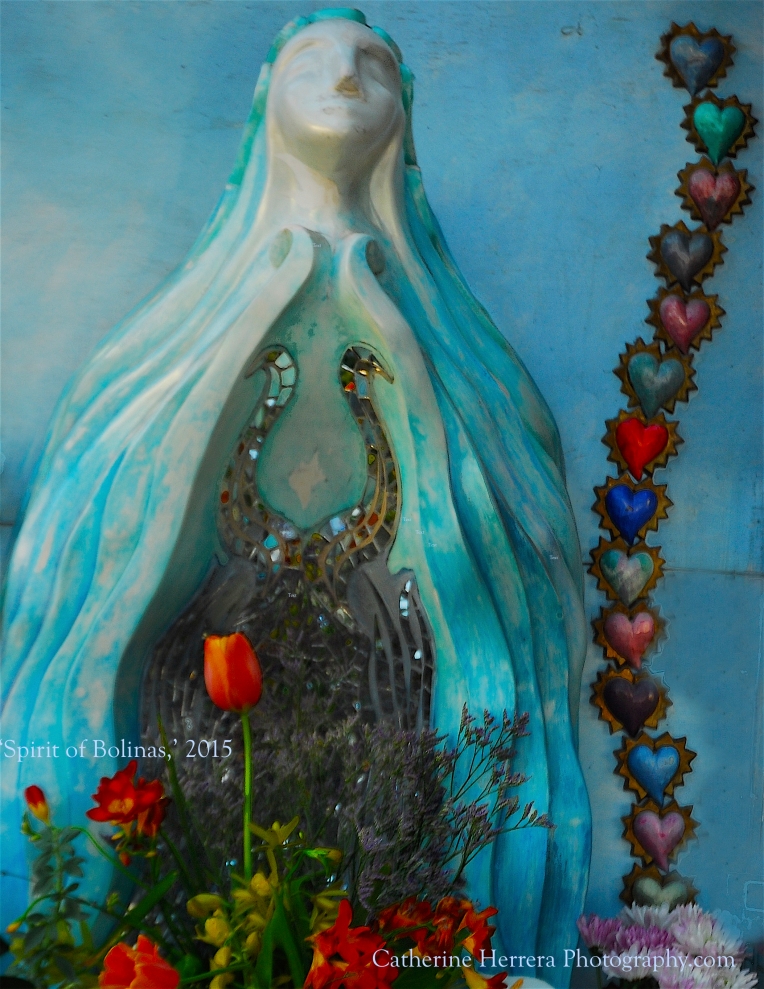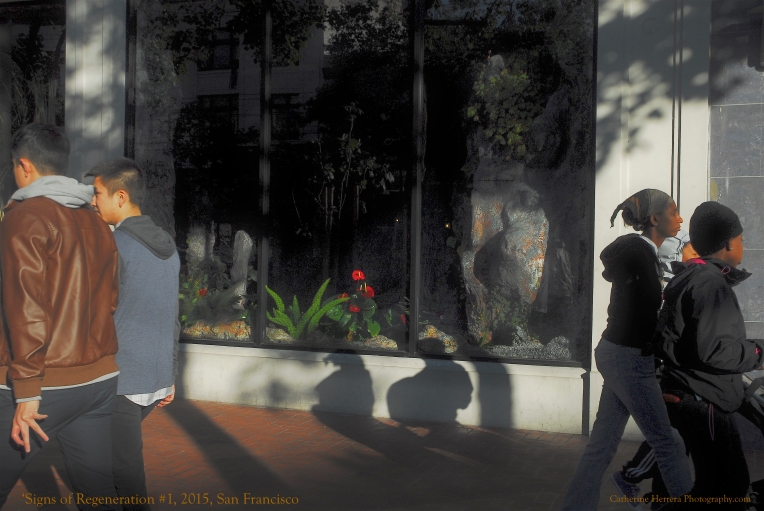[photoshelter-img i_id=”I0000ruwFHd3cgag” buy=”0″ width=”600″ height=”483″]
Sometimes, the photography journey is interrupted by real life and its demands. Often, the camera is there too, capturing those most difficult moments.
At times, not even framing can change what we see before our eyes.
Recently, my Grandma Mary passed away. She was one month shy of her 99th birthday. I loved my Grandma Mary and felt strongly connected, returning here to Northern California after Mexico, after Canada, to be with her. I was lucky to have 12 more years of time with her, time when she was lucid and present, and we could enjoy time talking and laughing together. She had a peaceful last 20 years of her life with few health problems, and, any health challenges she faced, she got up and over, surprising many.
I always called Grandma when I could not travel to see her. I called so often, she wondered whether I had a job, and worried that I spent too much time calling her! When I first arrived back in the US, I used to feel hurt when she’d say that to me. Working from a home studio made no sense to her.
Yet, still, did working mean one had to forget about one’s grandma??
I also felt perhaps she made these comments because my artistic lifestyle had been the subject of speculations, many speculations. If I called Grandma Mary during the day, she’d wonder if the speculation was true.
In 2012, I was so excited to share with Grandma Mary that I’d be showing one of my video installations at the de Young Museum.
Maybe I had not been a huge financial success, yet, I hoped Grandma Mary might see that all the speculation, in the end, was simple gossip.
‘The de Young, wow, swanky!,’ grandma had said. I knew that was probably the best I could get – yes, she was proud of me, and I heard that in her voice and the things she continued to say, yet, a video installation was all still very nebulous, something people with money do – being an artist -( a bum! was the speculation on that!) – and I felt once again I had crossed a line that our people were not allowed. I felt embarrassed to bring it up to her again.
It wasn’t that my grandma wasn’t proud of me being an artist. In fact, she had traveled to my first photography exhibit in Mexico City in 1996. She came all the way to Mexico at 81 to be there with me!
Once again, I had proven to be too much, as usual.
A few days after her arrival, my partner and I shared the surprising news we were going to be parents, she a great grandma, which shocked her so much she fell off the porch walking away after hearing the news, spending the night at an Emergency Room in Mexico City. And, many more visits to doctors when she returned home.
That’s where the speculation started. That unfortunate evening when Grandma Mary fell from the porch upon hearing our news.
It took us a long time to move past that incident, she and I, mainly because I had felt so badly and she often brought up what happened.
Some family members likened that night to the day my aunt and uncle invited me and my boyfriend to take two of the horses from their ranch for a ride. My boyfriend assured them that he was quite comfortable riding. His horse spooked a short distance into our ride, rearing up, throwing my boyfriend to the ground, taking off in terror. The horse tried to jump the fence and instead, tore a gash in its leg and required stitches and expensive care.
Those events shaped the speculation, and when I returned from seven years living abroad, the speculation had gone beyond into a new realm.
I could not be present during Grandma’s funeral. Not with camera, not physically. Maybe I couldn’t say goodbye. Maybe I couldn’t see her gone. I am a very visual person, and images impact me deeply.
I guess the grieving process takes time.
Grandma Mary and my last conversation was deeply meaningful. I did not know it would be the last time. We had laughed as usual, but then, she stopped and said, ‘you sound like yourself again, a good lady you are.’
The speculation had ended.
I thought to call Grandma Mary next on Saturday, but I didn’t get a chance. I called Sunday to share the news I know she’d be so happy to hear, about Martin’s Beach where she and my grandfather always took us during the summers. The beach had been reopened after a private owner gated off the public access.
Grandma Mary was not there.
She had fallen on Saturday night and even though my aunt and uncle said she’d be ok, that she did seem fine, Grandma would pass very quickly. We never spoke again.
I hold on to the last words she said to me.
Grandma Mary’s spirit remains here in San Francisco – when she was young, in high school and riding the trolley cars after the football games, one in the group of loud, celebratory youth, laughing with joy to be out enjoying life. When she was photographed on top of Twin Peaks on the day of wedding to her new husband, my grandfather.
Grandma Mary embraced life and encouraged us all to do so as well. I am forever grateful to her for giving me permission to be happy and embrace life. Its that spirit that gave me courage as a photojournalist.
The kitchen was the main gathering place in my grandparents home. Food and talking and laughter was just the main course in their home. They had traveled around the world, and the kitchen was where the push board held photos from family and friends near and far.
Later, when I became a photographer, I remembered that cork board. I suddenly recognized the value that photography can have in bringing together family and friends. Photography, that I had made use most as a photojournalist, suddenly became personal and intimate, and its impact on the heart.
This memory allowed me to expand beyond what I had visioned previously. Photographs were much more than documents of the outside.
I made a shift to more personal work, more intimate, and revealing.
After many years of exploring photography in this way, I started doing editorial and assignment work where I was hired to create, not just document, with photography, and, I developed a new love and perspective on photography and art.
I think it was this new direction that made me such a fan and so moved by Ruth Asawa’s sculptures.
The first pieces of her work that I ever came in contact were at the de Young Museum. On permanent display, I passed her sculptures every time I came for a meeting or to work at the de Young Museum.
Ruth Asawa’s sculptures went beyond the mere sense of documentation to inhibit an intimacy that touched people across the globe.
[photoshelter-img i_id=”I0000_YN_5Qc75_o” buy=”0″ width=”600″ height=”795″]
From the description of her work in the ‘The Sculpture of Ruth Asawa: Contours in the Air’ retrospective in 2006 at the de Young Museum:
‘Contours in the Air establishes the importance of Asawa’s work within the larger national context of artists who redefined art as a way of thinking and acting in the world rather than as a mere stylistic practice….In her lifelong experimentation with wire, especially its capacity to balance open and closed forms, Asawa invented a powerful new vocabulary. Committed to enhancing the quality of daily life through art produced within the home, she contributed a unique perspective to the formal explorations of 20th Century abstract sculpture.’
Ruth Asawa was considered at the time of the retrospective to be underrepresented in art history surveys of 20th century sculpture. Dr. Daniell Cornell of the Fine Arts Museums San Francisco, curator of the ‘Contours in the Air’ retrospective, described what he felt was the reason, saying:
‘Because her work uses nontraditional materials and a manual method that appears related to knitting, weaving and craft, it is often overlooked in discussions of modernist sculpture.’
Like the cork board in my grandparents kitchen, Ruth Asawa’s sculptures go beyond what sculpture is normally confined, liberating an intimacy that draws on the heart and minds of its viewers.
Asawa’s use of hanging her sculptures went beyond the conventional display normally reserved for sculpture, like the opening scenes of any memorable film or play, the audience’s attention gravitates and is held by it unique display, in the case of Asawa’s sculptures, captivating the viewer, making one stop and pay attention.
Ruth Asawa is infused forever onto the San Francisco landscape.
[photoshelter-img i_id=”I0000x77vCvyU81E” buy=”0″ width=”600″ height=”421″]
Any visit to the de Young Museum is a wonderful opportunity to view 15 of her wire sculptures on permanent display on the concourse level of the Nancy B. and Jake L. Hamon Education Tower of the de Young museum.
Passing the sculptures often on my visit to the Hamon Tower in preparation for the ‘Bridge Walkers’ screening in September 2012 , designed itself to incorporate into the San Francisco landscape from the Tower view, I fell in love with Ruth Asawa’s sculpture.
As a person, and an artist, I hope one day to leave such a legacy, treasures found and enjoyed by generations of San Franciscans to come.
Read more about Ruth Asawa’s life and work from the SF Chronicle article that came out this week upon her passing.
http://www.sfgate.com/entertainment/article/Sculptor-Ruth-Asawa-dead-at-age-87-4709612.php#src=fb




















You must be logged in to post a comment.